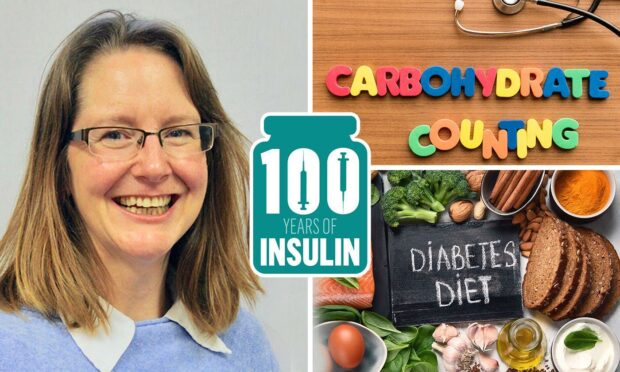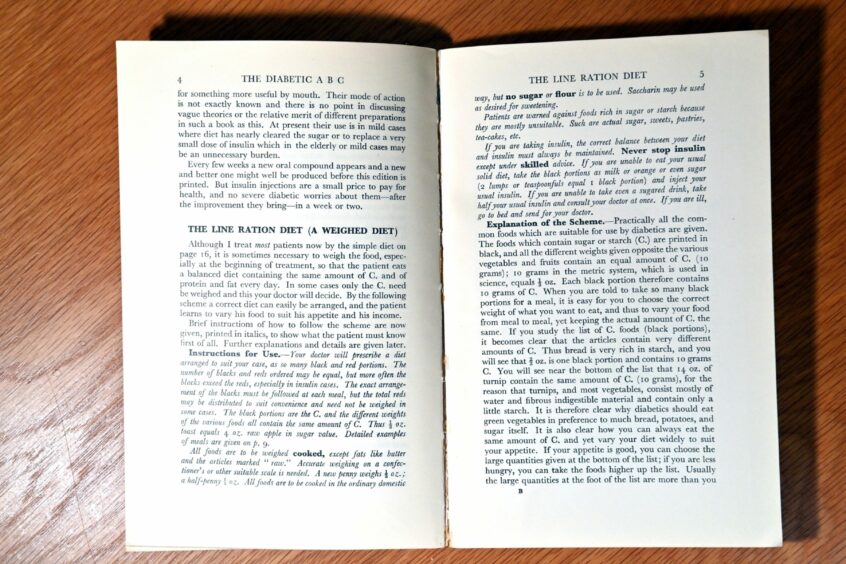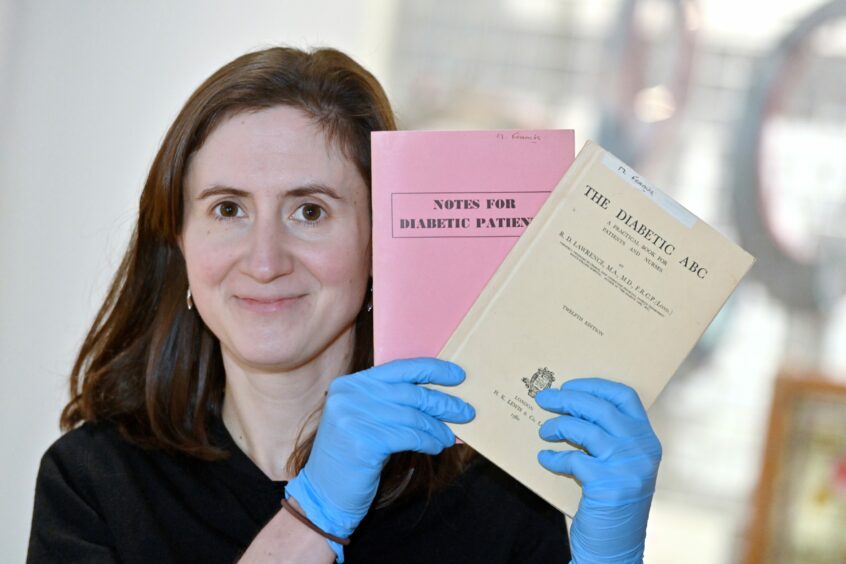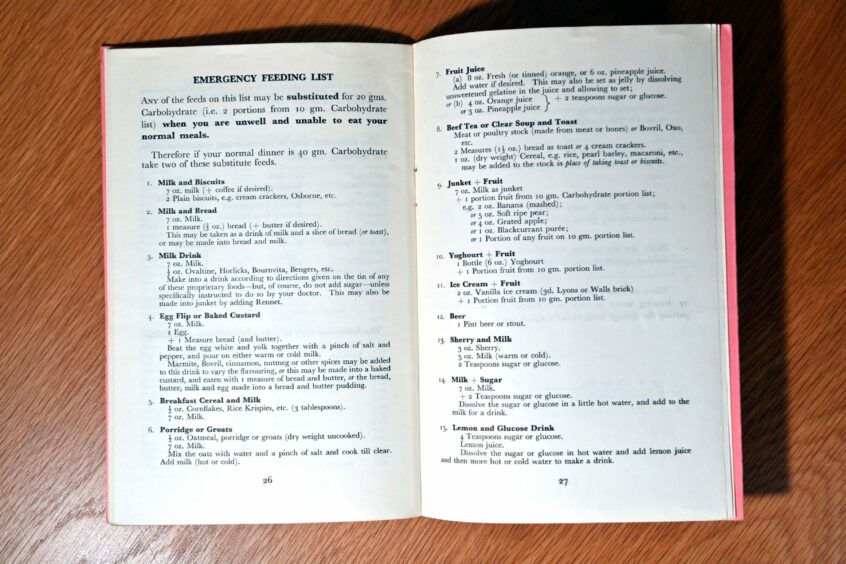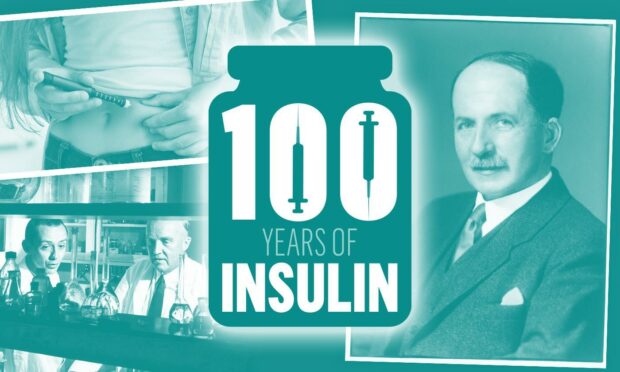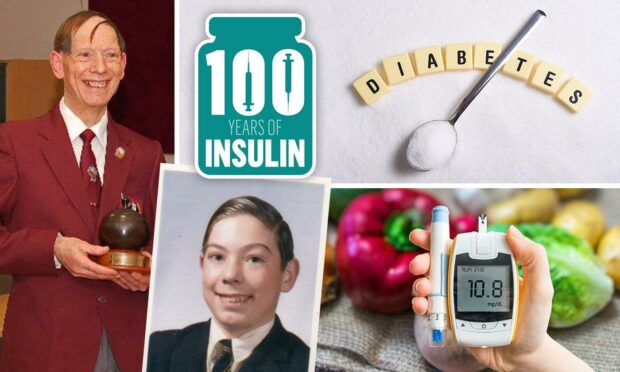Ever heard of beef dripping sandwiches?
They were made from the congealed fat that drips from a joint during roasting which was spread on bread and sprinkled with salt and pepper.
It was a popular delicacy in many UK households during the war and was still eaten as a snack in the 1960s.
But it fell out of favour as diet recommendations changed and we were encouraged to eat less fat.
And this was no different from the diets prescribed to diabetics.
North-east dietician Maria Dow highlights how more of an emphasis was placed on fats in the diets handed out to Type 1 diabetic patients in the early 20th Century.
She has spoken to us for the second part of our 100 Years of Insulin series celebrating the centenary of the first patient successfully injected with insulin.
The Line Ration Diet
The diabetes diet recommended in 1925 was called the line ration diet. The aim was to eat the same amount of protein, fat and carbohydrates each day.
It was later developed into the Lawrence Line Diet and this is when the first real carbohydrate counting recommendations were introduced.
Carbohydrate foods were printed in black (black lines), and the protein foods in red (red lines).
“There were a lot more rules for diabetes patients,” Maria says.
“The line diet had a lot more onus on fats and it’s interesting because sugar and flour were not permitted.”
‘As a nation we were a lot more active’
Fats continued to be a big part of our diets in the 1960s until it became clear that they could be a risk factor for our health.
“If we think of the traditional diet in the 60s, there were dripping sandwiches and a lot more oil and fats in the diet, and a lot more butter,” Maria said.
“But as a nation, we were a lot more active. There was less use of cars and we walked to the shops. And there were fewer snacks or meals out.
“Sixty years ago, we used the evidence that was there, cutting right back on the carbs, having more of the fats, more of the protein foods for energy for a more active lifestyle.
“The diet has progressed significantly since then, but so have our environments and lifestyles.”
Diabetes diets: What should patients eat now?
Today a diabetes diet for Type 1 patients simply means eating the healthiest foods in moderate amounts and making sure you stick to regular mealtimes.
Slow-release carbs such as oats, baked potatoes and wholewheat pasta are good choices for patients along with protein and plenty of vegetables.
Small portions of fruit, which were once forbidden because of their sugar content, can also be eaten as part of a meal or as a snack.
“You’re really looking at a healthy, balanced diet, one that is low in fat – particularly saturated fat, with lots of vegetables, almost a Mediterranean type approach,” Maria says.
Why has the diabetes diet changed so much?
The discovery of insulin played a major part in changes in care for diabetic patients.
Fourteen-year-old Leonard Thompson was the first person to receive the life-saving medication on January 23, 1922 as a treatment for Type 1 diabetes.
Maria says diets are a lot more flexible now for patients diagnosed with the condition.
“People are probably a lot more comfortable with adjusting insulin doses,” she said.
“So if they’re feeling unwell and recognise that their blood sugar levels are high they may be more comfortable with adjusting insulin levels rather than thinking they have to eat a certain food.
“Whereas in the 60s you had a fixed insulin regime and you had to eat around it.”
She added that it was vital for Type 1 diabetic patients to follow a healthy diet to avoid serious health complications.
‘It’s a major achievement’
Maria highlights how important the discovery of insulin is for the care of diabetes patients.
“It is a major achievement,” she says. “Really their discovery 100 years ago was the start of our learning.
“We wouldn’t be where we are today without this discovery.”
